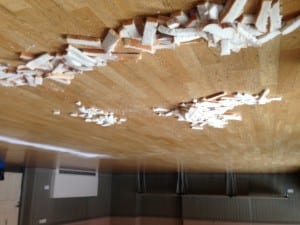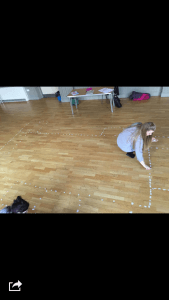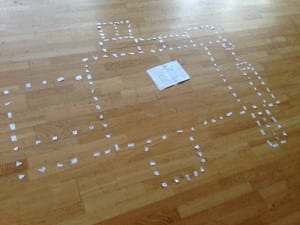The history of our piece
In the 1850’s there was a famous factory called the Ruston’s factory which you will now know as semen’s, this organisation was ran by an industrial manufacture called Joseph Ruston. The company was known for manufacturing narrow and standard gauge, locomotives and steam shovels. They became Ruston practor and company in 1857 when Joseph Ruston joined them. From 1866 they build a number of six coupled tank locomotives one of which was sent to the Paris exhibition in 1867.
Whilst the Ruston’s factory was making profit in 1859 Joseph Ruston had the idea of building the drill hall. The drill hall took 31 years to build and was not completed until 1890. £10.000 was spent in these years making sure that it was accessible to the general public.
The factory workers at the Ruston’s factory wanted a pay rise whilst the Drill Hall was being built but Ruston refused this by stating “Don’t deprive me of my bread and cheese.” From then on the Drill hall to the workers was none as the bread and cheese hall and it was a mockery to them.
During the First World War, Ruston assisted in war effort, producing some of the very first tanks and a number of aircraft. The drill Hall was also a war unit where solders were trained for battle around 4000 men attended this unit and out of that 4000 423 died.
Using the history that we have found out about the drill hall me and my group came up with an idea. Knowing that the drill hall was a mockery to the Ruston factory workers back in the 1800’s, stating it the ‘bread and cheese hall’, we though that creating a version of the drill hall out of bread and cheese would be an interesting concept. We will also take into account the soldiers that attended the drill hall in World war 1 and how many died who attended this unit, making sure that the resources we do use have a meaning behind them. Throughout 0ur process we will be finding ways to link our use of bread with the soldiers.

Our influences
Site Specific performance focuses primarily on place and the history behind that place but there are many fragments to Site Specific performance. Mike Pearson in his article displays that “Performance and archaeology favour body, object, place, activity and context” (Pearson, 2001). With our piece we want to create theatre that uses senses, objects and the body, using these will help us with our narrative.
My group and I from the beginning were interested in using senses. Janet Cardiff’s piece ‘The forty part motet’ creates a sound scape using speakers. Forty Separately recorded voices are played back through forty speakers strategically placed throughout the space. The sounds that the audience can here are from a 40-part choral performance of English composer Thomas Tallis’s 16th century composition sung by the salisbury cathedral choir. As you can see in the picture bellow this would create an emotional evocative sound sculpture that would feel intimate even with in a public space. These emotions are felt through the senses of hearing, we thought we could use some of Janet’s ideas of senses in our piece.

We were also influenced by bobby baker with her use of natural resources in her piece ‘Mad gyms and kitchens’. This piece is bobby demonstrating how she achieves the ultimate ‘well being factor’. Throughout the piece Bobby will use vegetables and different types of foods and throw them at walls letting all of her anger out. From reading up on this it was interesting to see how you can use food in different ways. The smells that you get with using food can enhance a piece by picking up on the audiences senses, by doing this the audience can feel certain emotions for the piece by relating the memories they have with the food to the piece of theatre. Lyne Gardner from the Guardian states ‘Like all of of Bakers work you leave feeling better than when you came in. Its not a show but a priceless gift wrapped in theatrical box of tricks’ (Guardian, 2004)
Our process to are final performance
At the beginning of our process my group and I found a birds eye planned view of the drill hall. Are main aim was to build a three dimensional version of the drill hall but through practice with other resources such as paper and blocks we found this unsuccessful. Looking at the floor plan of the drill hall we came to a decision that not only would it be easier building it in this way but we could also use the bread in an interesting way. Using whole pieces would be difficult so my group and I experimented by using paper.
In the example bellow we cut up the paper into small rectangles, we created a miniature version of the drill hall. By getting up and creating it we found it easier to recognise what worked and what did not work. We knew that cutting the bread up had a positive effect on our piece and we realised that they represented bread soldiers that you would have with a dippy egg. Knowing that the Drill hall used to be a war unit for soldiers in world war 1 it seemed appropriate to incorporate this into our work.
4,000 men served at the Lincoln drill hall and out of the 4,000 who served 423 men died in battle from the Lincoln unit. Each bread solider that we use in our piece will represent one solider that served at the Drill Hall in the first world war. We worked out that in each loaf of bread you can create 70 bread soldiers. My group and I will have to source 57 loafs of bread which will hopefully create a planned view of the drill hall as large as the green room where we will be performing our piece, at the end when it is created we will place a layer of cheese onto each bread solider.


